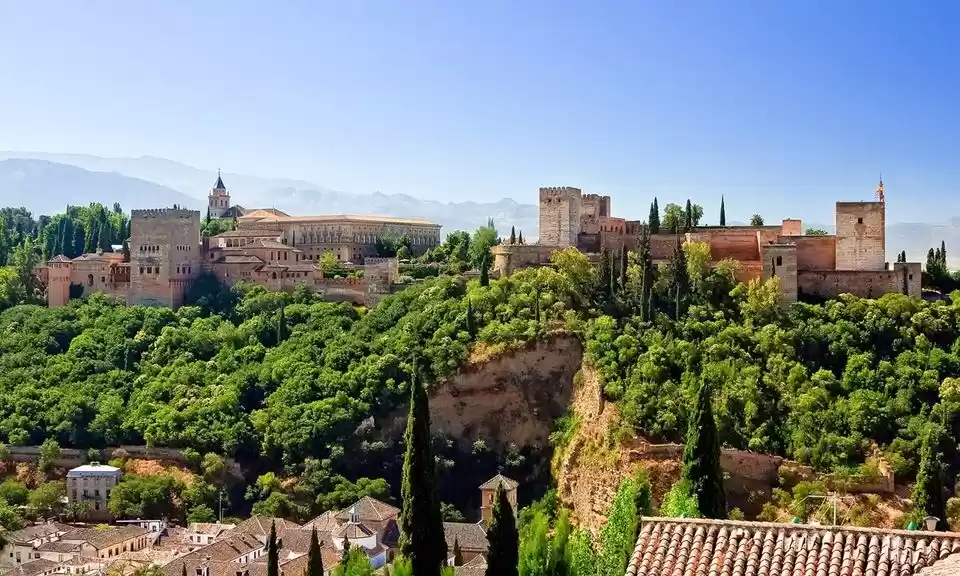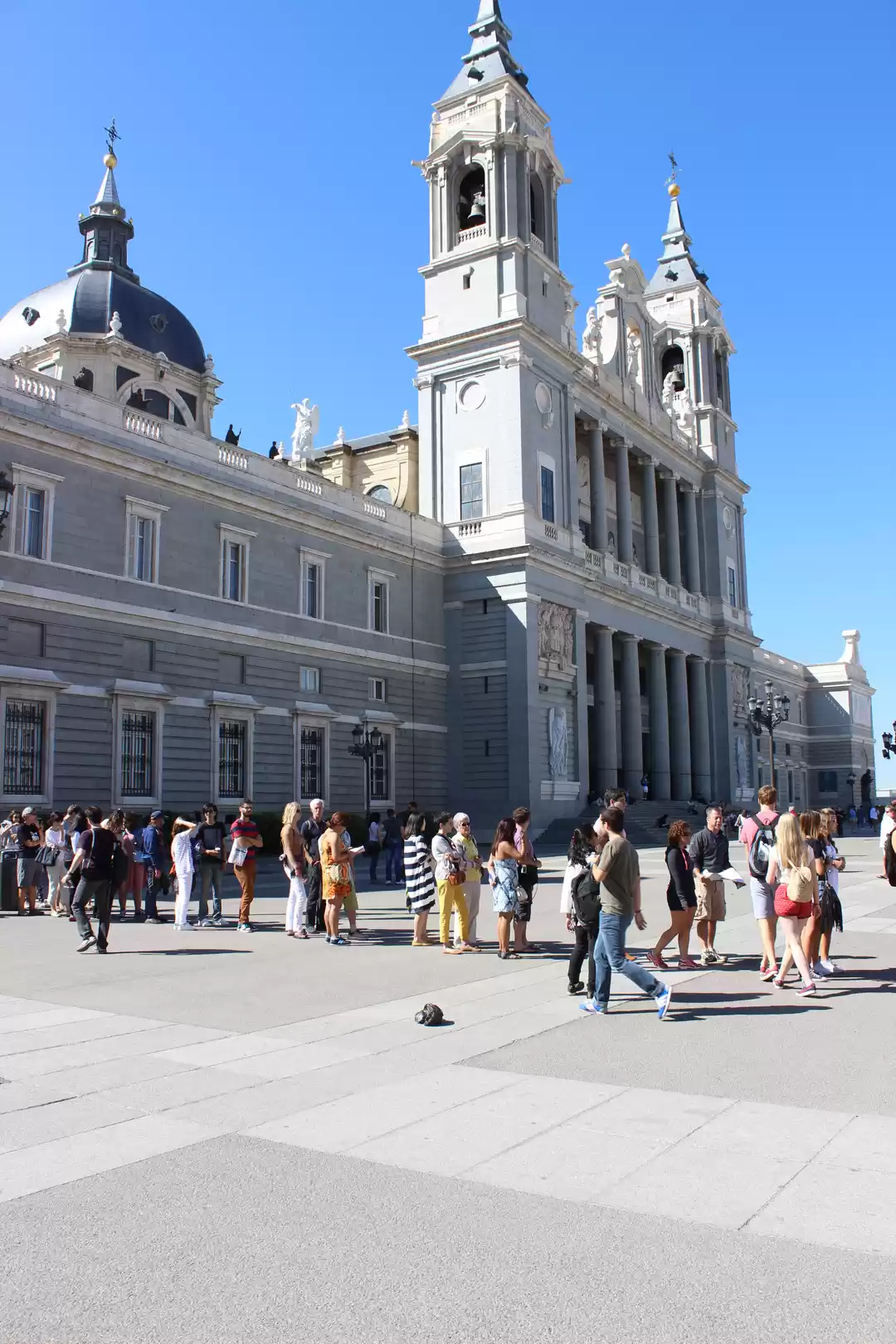
Since childhood, gypsies had always cut a fascinating picture on my mind. Beautiful women with headgears, swirling around to the beats of tambourine and caravanning to far-away lands without any itinerary in hand. Little did I know one summer I’ll travel to meet my childhood fancy in the Andalucian city of Granada.
It was 5 pm on a Saturday evening. At the look of it Granada seems like any other European small town seasoned with a cute city center, tapas bars and a city of passage for many students out to make a fortune.
Alas! We were unable to step out of our rental car. After several failed attempts in finding a paid parking, we finally ousted the car in an underground pay & park. Finally I stepped off the car when street lights tinkled out and too many decked up bohemians, party goers and travellers like us armed with GPS were marching for their go-to-place.
Granada is walkable with arresting architecture. Founded in 1524, the town was the first ghetto of the Moorish rulers in Spain. Many tick off Granada keeping the opulent Alhambra in mind but once heard from a writer friend, the backstreets and barrios( (neighbouring towns) flashes elegance and edginess in equal measure.
Things to see & do in Granada
Alhambra
The showstopper of Granada is Alhambra, a palace-fortress built for the Nasrid Sultans, rulers of the last Spanish Muslim Kingdom. After the Reconquesta, the palace was the home of the Catholic Monarchs, Isabella I and King Ferdinand II.
Don't forget to book in advance and spend a day pottering into its royal chambers, serene courtyards and divine Renaissance and Moorish architectures.
The Generalife
The Generalife is a compound of gardens and palaces of the sultans. Its name literally means 'garden of the architect'. This evocative walled garden was supposed to be the meeting place of Sultana Zoraya and her secret lover. The most fascinating part is the staircase named as Camino de las Cascadas, with water cascading down its stone balustrades.
Albayzín

The Arab quarter of Granada is a treat to the eye. After the reconquest, this is where the Moorish population built a ghetto of theirs and found a home. One cannot go past without stopping by the captivating architecture and the street plan which is a warren of tight alleys packed with white washed town overlaid with hand-painted Moorish tiles.
Mirador San Nicholas
At the top of the Albayzin district sits the church of Saint Nicholas fronted by a square. The square gives out a sweeping views of Alhambra with the Sierra Nevada mountains looming in the background. If you're a budding photographer or a blogger always in hunt of classic sunset shots then this is the place to be.
Capilla Real
All Europe travellers love the act of Church crawling. Capilla Real, the Royal Chapal is the last resting place for the Catholic monarchs Isabela I and Fernando II. It was Fernando II who commissioned the gothic style mausoleum that was to house them.
Basílica San Juan de Dios
If you're a lover of architecture, head to this historic basilica , flashing a display of opulent baroque decor. The elaborate embellishment, most of it in gleaming gold and silver, catches ones eye. But the high water mark of the Basillica is the extraordinary gold altarpiece in the Capilla Mayor which is the main Chapal.
Alcaiceria
Once you've taken in the history, culture and architecture of the places its time to hit the vibrant markets of Granada. In the Moorish times, this was the location for Granada’s Great Bazaar, where merchants would laud their silks and spices along several crisscrossing streets. These days the Alcaicería is home to Granada's souvenir stalls, selling a variety of Arabic craftwork, such as the fajalauza (traditional local painted ceramics), taracea (wooden inlay, in items such as desks, chessboards, or trinket boxes), and typical granadino farolas (stained-glass lamps). At sundown as the street light glows, the footfall peaks, the market looks like the one in Istanbul and you cannot help saying to your travel partner, "There is no place I'll rather be".
More Things To Experience
I was caught on the wrong foot within 24 hours by that vibe which isn't quite the east but neither is it the west. The only way to soak in the true spirit of an Andalucian town, was told by my travel partner (my husband), is to hit to the city’s flamenco clubs and tapas bars.
Picking a tapas bar is a tall order in any Andalucian town. Thanks to my affinity with travel magazines, I read about this old school tapas corner in a bar lined street.
The pre-conceived notion that tapas comes free with every drink in Spain is not always true. The place was rammed with young and old cheering to the tunes of a jazz performer. The menu which says that tapas is the gift of the house seemed even more inviting. Seafood, sherry-soaked clams, tempura aubergine and fried bacalao (salt cod) were the tapas on offer. I sat down with the house Rioja and my husband who quietly started sipping his Sangria.
The dimly-lit interiors, intimate seating , servers bearing tapas plates gliding the room all smiling and gleaming to the full rounded notes of the jazz pianist. Not one of them sneaking into his phone or trying to begin a conversation in the lure of good music has been proven in practice that night.
After the performance, I casually went up to ask the singer where is the best flamenco performance happening tonight to which he replied with a glint in his eyes “In the sacred caves of Sacromonte at the edge of Albayzin, every day is a best performance”.
Eric, a Polish immigrant and the pianist has made the caves of Sacromonte his home since 1998. To make a living, he sings jazz in the downtown of Granada. He told us to find our way to Sacromonte the next day if we want to see the other world of Granada.


Sacromonte, or the sacred mountain, is a cave studded countryside, home to a gypsy community who claim the first form of flamenco was born here. I cannot thank Eric for bringing this to my attention. 7 o’clock next morning we headed to Sacromonte, enroute the medieval warren of the Albayzin, the ancient moorish quarter of Granada, still looked non-European centuries later. Spanish streets in the morning looks a fitting contrast to its lively nights. The Spanish way of life is uniquely theirs, they party late, wake up at lunch-time; breakfast is generally a non-event. Joyfully abiding this rule we backpacked some nibbles and energy drinks and went to an outing to the ancient caves of Sacromonte.
Map calculated an easy half an hour hike. My travel partner, who is a zillion times fitter than me, has evaluated my shortcomings. I should’ve listened to him and climbed aboard the bus than hiking the way. I should have known any upcoming discovery drives a feeling of euphoria which most cases numbs the pragmatic in you.
We ran into rocks and cobbled roads that kept getting steeper with every turn. We rested on boulders, ate chocolate bars and challenged each other’s photographic skills. It was one of those rare moments when we are on same page and just like in movies when things tend to fall in place you suffer a road block, so did we.
My muscles ached slowing down my hiking speed. My expression fixed and unreadable trying to ascent the 60 degree steep, coming our way. I saw the mountain rise before me, on which the mighty Alhambra stands. Our itinerary has the Alhambra visit in the noon but for now my mind was in the caves of the Gypsies, few would go the miles for.
Eric’s tell-tales of the gypsy community of flamenco dancers and my husband’s constant push fuelled me to hike but seeing another steep drag, I gave up . I reached a boundary wall along the road almost in a hobble. Deep within I enjoyed keeping up with the silent and isolated façade of the Spanish countryside and breathing the freshest air. My husband has moved little further just to locate the signpost of the destination we were headed . I heard a voice calling out to me. “ If you think you’ve lost you lose, if you think you’ve won you win.”
I looked around standing stock-still. I picked up my backpack, slipped it over my shoulders. I carried it many a times, but never it left so light.
The echoing words hauled me to Sacromonte. A little further up we came to the Camino del Sacromonte, the main drag of the neighbourhood packed with tapas bars, flamenco clubs and a museum but all shut at this time of the day. I saw a man wearing reddish dyed hair to his shoulders and a blue linen shirt. I asked in English which way is Sacromonte when he moved his hands around to signal, which I deciphered meant we have entered into the land of the sacred mountains, facing his hands towards the hills. I knew instantly I spoke to a gypsy, never mind if it was the shortest interaction ever with a man. I ticked off my childhood fancy.

From morning till evening we lolled in those intriguing lanes running up and below Camino del Sacromonte. Alhambra had to wait for the next day. We spoke to a member of a gypsy community about Zambra, a flamenco variation with a more oriental feel in which the singer too taps her feat to the music.

Put in a couple of minutes in the narrow low-ceiling bar scanning the graceful moves and soaking in the emotion poured out through the voices of the dancers, you’re no longer a spectator. You become a participant.
Sacromonte was starting to bring out my inner scout. I wanted to learn the history of the ancestors who took their first steps in flamenco living in Granada’s ancient caves more than 500 years ago. I listened more about this version of flamenco and every story, every narrative centering the lives of these gypsies. I wanted to understand them. One globe trotter and a photographer around told me “the dance is like creating a connect with their forefathers”
That helluva night clinking drink glasses with photographers, dancers, travel writers, hikers and cave residents, felt a sense of deep rooted community. A community of travellers who stay awake in the wee hours of the morning spotting that light that raises your eyebrow. After all living in a era where people are cash-rich and time poor, a proud community still exists throwing caution to the wind to exhibit their culture to the global world.
Today when I go back to that night I know the voice that called out was none other than me. The truth is travel not just opens your heart to the outside world, it also opens you to the insider, ie. to yourself. In the summer of 2016, I listened to the call of the gypsy rads of Granada and its time you remember that one call taking you into the summer.#IssSummerBaharNikal
How to get to Granada
Air - Granada has an International Airport - Federico García
Lorca Granada Airport.Qatar Airways flies in code shares with Iberia airlines from India to Granada. Easyjet flies up to four times daily from Bristol, East Midlands, Gatwick, Liverpool, Luton and Stansted to Málaga.
Road - Granada is a two hour drive from Malaga, Spain.























